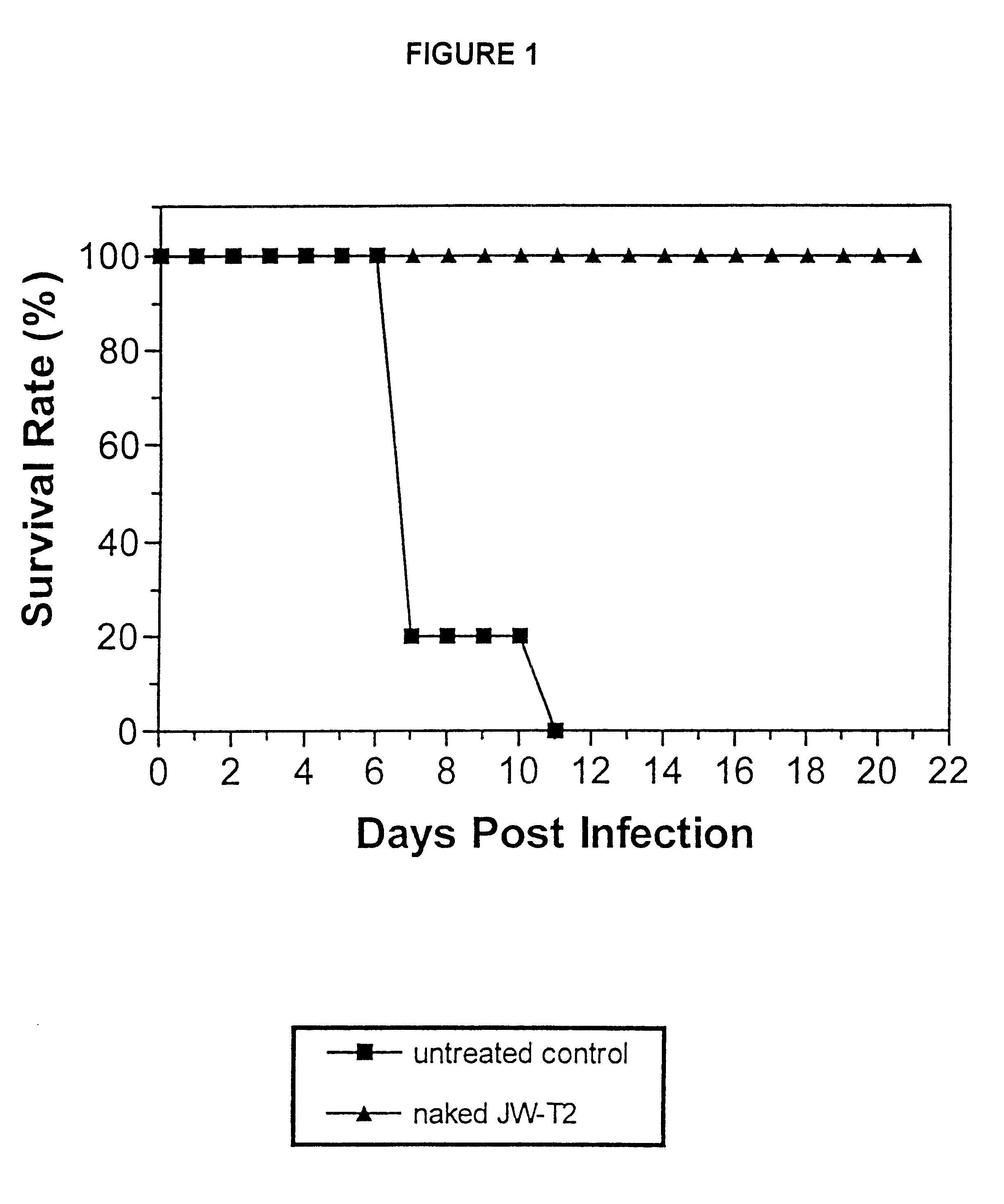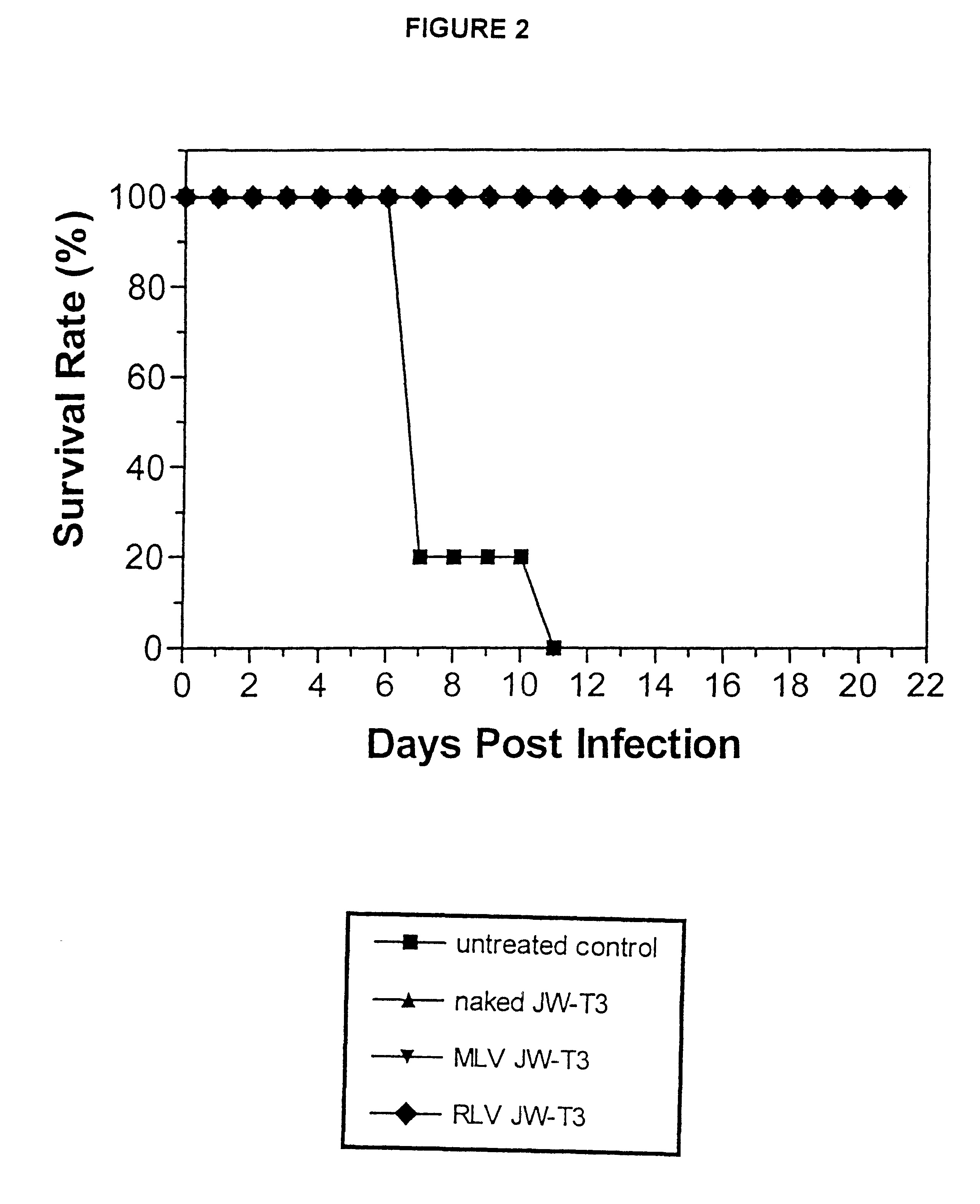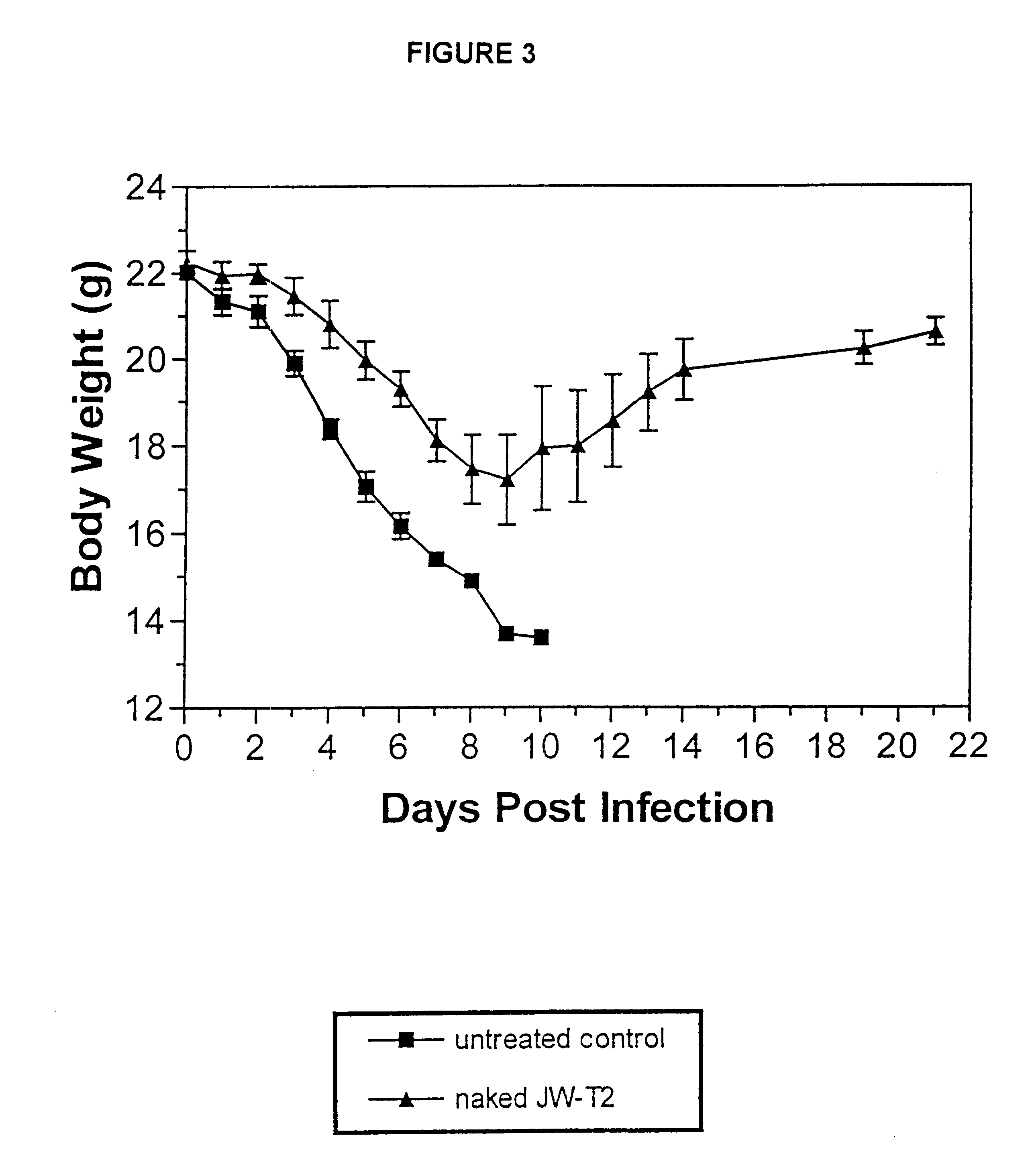Therapy of respiratory influenza virus infection using free and liposome-encapsulated ribonucleotides
a technology of liposome and ribonucleotide, which is applied in the field of free and liposome-encapsulated ribonucleotide therapy for respiratory influenza virus infection, can solve the problems of virus vaccination, significant limitations and drawbacks of such an antiviral vaccination, and ineffective against new virus variants
- Summary
- Abstract
- Description
- Claims
- Application Information
AI Technical Summary
Problems solved by technology
Method used
Image
Examples
Embodiment Construction
The studies described below are provided to describe in detail some of the representative experimentations, including preferred methods and materials of the invention, and provide analysis of results and discussions thereon. These descriptions are provided for purposes of illustration of the inventive concepts, and are not intended to limit the scope of the invention as defined by the appended claims.
1.0 Materials and Methods
1.1 Ribonucleotide oligonucleotide synthesis and liposome preparation
Oligonucleotides used in this study were prepared by Oligos Etc Inc. (Wilsonsville, Oreg., US). For all experiments, all RNOs were diluted in 0.9% sodium chloride made from RNAse-free water (Sigma, St. Louis, Mo.).
The sequences of the RNOs were as follows (SEQ ID NOs:1-4, respectively):
As noted earlier, RNO JW-T4 is a negative control sequence that was used in studies relating to the present invention. Negative control sequence RNO JW-T4 does not offer any protection against viral infections, a...
PUM
| Property | Measurement | Unit |
|---|---|---|
| pH | aaaaa | aaaaa |
| volumes | aaaaa | aaaaa |
| molar ratio | aaaaa | aaaaa |
Abstract
Description
Claims
Application Information
 Login to View More
Login to View More - R&D
- Intellectual Property
- Life Sciences
- Materials
- Tech Scout
- Unparalleled Data Quality
- Higher Quality Content
- 60% Fewer Hallucinations
Browse by: Latest US Patents, China's latest patents, Technical Efficacy Thesaurus, Application Domain, Technology Topic, Popular Technical Reports.
© 2025 PatSnap. All rights reserved.Legal|Privacy policy|Modern Slavery Act Transparency Statement|Sitemap|About US| Contact US: help@patsnap.com



